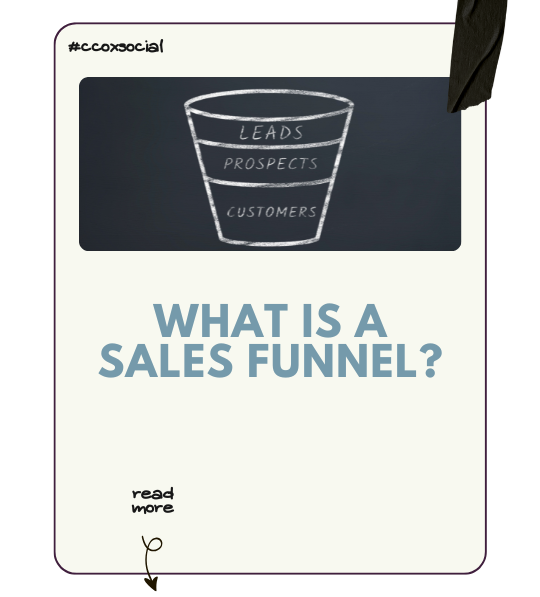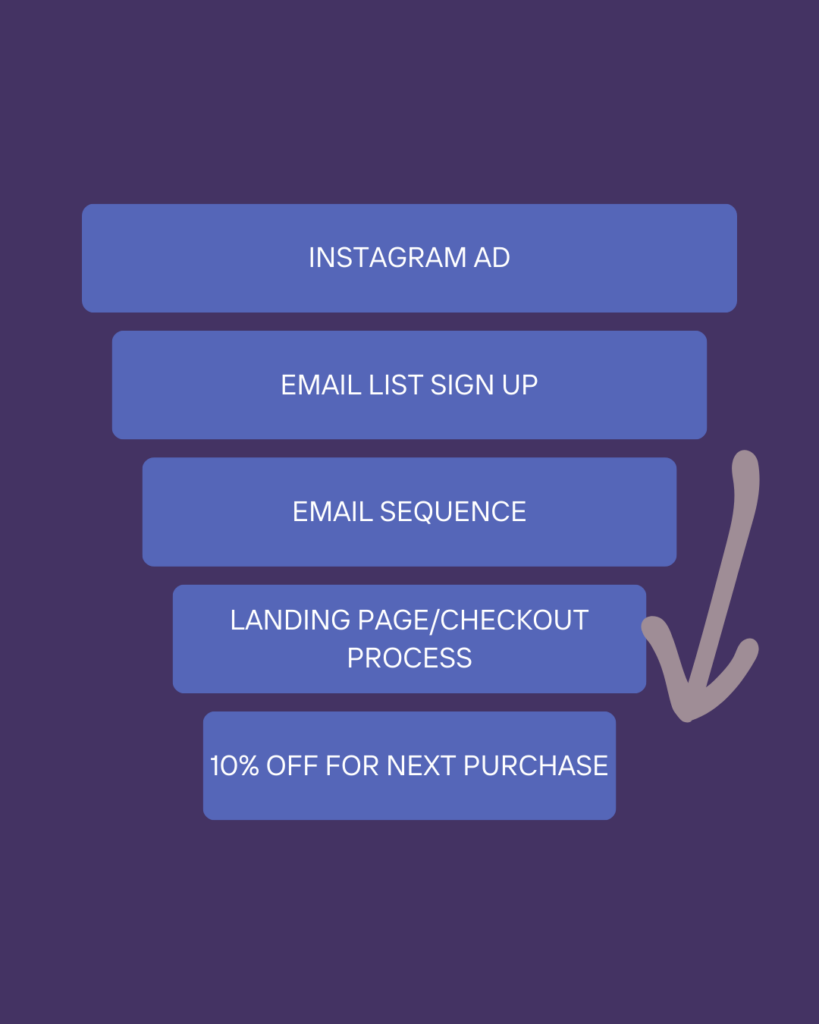What Is a Sales Funnel?
CPG, PPC, SEO, Social Strategy
April 22, 2025
By Bria Hutchinson

Marketing is an industry with lots of jargon. You may have heard terms like “sales funnel,” “customer journey,” “purchase funnel,” “sales pipeline,” or “revenue funnel.”
They all refer to the same thing – the process of how someone:
- Becomes aware of your business
- Gets interested in it
- Wants what you offer
- Purchases your product or service, and
- Becomes a frequent customer/client or refers others to your business
Essentially, it’s your client’s path from beginning to end. So let’s break that down and get really clear on what that means and how it works.

Brand Awareness
This first step is known as the top of your funnel (ToFu). Usually when your customer starts their journey, they haven’t had any interactions with your business. They’re known as a “cold lead” since they don’t know anything about your company.
Your job is to warm them up to you. The easiest way to do this is to be helpful. Even if you can’t directly solve a problem for them, you can still be friendly and warm. Guide them to relevant resources and they’ll remember the interaction in a positive light. Leading to a solid foundation of connection and trust.
This stage is often the hardest, because you’re narrowing down who you want to work with. It often takes up to seven times for someone to interact with your business before moving to the next step of the funnel.
Encouraging Interest
Known as the start of MoFu (middle of the funnel), this stage is about growing interest. There are so many ways to do this, but here are some easy ideas to get you started:
- Freebies – free trials, giveaways, swag, how-to’s, step-by-step guides
- Give a sample or discount in exchange for an email or newsletter sign up
- Showcase reviews or testimonials
Everyone loves free things, so if you can, do some giveaways. Many people are more likely to want to give back if they’ve been given something first. Plus it helps deepen the connection and build trust!
Exchanging a small sample for an email sign up is a very low-cost thing for a client to do. They can always unsubscribe in the future, but getting their email gives you a chance to strengthen the relationship in the next stage.
Reviews and testimonials are what’s known as social proof. They show your potential customers they’re not the first ones to try your work. For them, that means you’ve likely already ironed out the kinks and the process will be smooth and easy for them. Social proof also shows you’re trustworthy, because others have benefited from working with you!
Once you’ve generated someone’s interest, you can move them further into the customer journey.
Stoke Desire For Your Work
Now that your potential client is warmed up and you’ve piqued their interest, let’s stoke that desire.
This is the time for a fantastic welcome email sequence to nurture the relationship. Showing prospective customers that you’re in this for the long haul establishes you as a reliable and consistent business. Which means they can trust that you’ll be there to support them should they need it.
Another way to increase the need for your work is through the use of case studies. Case studies show another’s customer journey from beginning to end. They help your reader understand the specifics of what it’s like to work with you. You can showcase how you changed the previous client’s life for the better through your product. Helping the prospective client understand how you could help them, too.
This is also a great time to let your customers know about any promotions, discounts, limited time deals, etc. so they can take advantage of that and try out your service for a lower cost.
When they’re ready to take action, they’ve moved toward the end of your sales funnel.
Encourage Clients to Take Action
The start of the bottom of your funnel (BoFu), this is where you encourage people to buy from your business. This step can include things like:
- Calls to action (CTA)
- Landing pages
- Easy checkout processes
- Webinar registrations
This is a crucial step! Do not take it for granted that someone is at this stage in your sales funnel. This is your final chance to get them to take your desired action, whether that be a purchase, registering for an event, or something else.
Make sure your CTA is clear and simple. Buttons with CTAs like “Buy Now” or “Register Here” linking to the checkout or sign up page is perfect.
If you’re selling a product/service, a persuasive description goes a long way in getting someone to take the final leap. Show off all the benefits of the product, along with any testimonials. And be sure to address any objections a person may have, so they know your product is the one for them.
Repeat Clients and Referrals
Once someone buys from your business, it’s essential to continue cultivating the relationship. Showing that you value your clients helps them trust you even more, and shows your reliability and consistency.
To entice clients to continue their relationship with you, don’t forget to thank them for their initial purchase. Maybe go the extra mile by adding in a small discount for their next purchase.
You could also start a loyalty or referral program where they get something in exchange for referring one of their friends. Many people are more likely to trust and buy from a business that their friends referred them to.
Remember that it’s significantly more difficult to gain new customers than to retain current ones.
Now that we’ve covered the idea of a sales funnel, let’s look at some examples.
Sales Funnel Examples

To help you start thinking about building your own customer journey, here are a few examples:
- Social media or search engine ads > email sign up or opt in page > nurturing email sequence > landing page > discount for next purchase
- Blog CTA > email list sign up > webinar/class/event registration page
- Social media post with CTA > free resource/tool > case study > landing page >email with a discount code for the next purchase
Notice how the middle of your funnel doesn’t have to have two distinct “interest” and “desire” steps. They can be combined, especially if you’re using lots of social proof.
If you’re not sure how your current customers are moving through your funnel, don’t be afraid to ask them. A simple “how did you hear about us” will tell you where they began their journey. And once you ask enough people, you’ll have a good idea of where they are when they first become aware of your business. Which means you can intentionally start your sales funnel there.

And if you want to build your sales funnel using social media, book your CCox Social consult to see how we help!